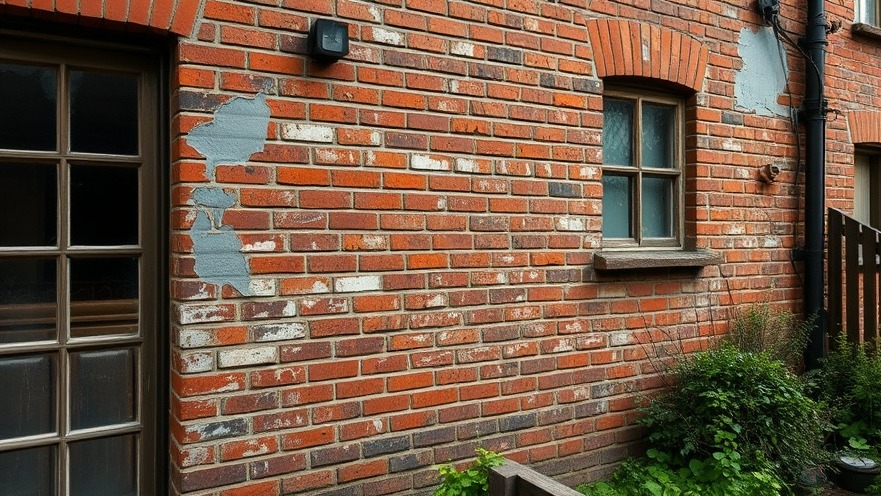
Understanding Rising Damp: What You Need to Know
For homeowners, especially those in London with charming old houses, "rising damp" can be a lurking menace. It refers to the unwanted moisture that ascends from the ground into the walls and floors due to capillary action. Unlike other damp forms like condensation or penetrating damp, rising damp has distinct signs and symptoms—such as peeling paint, crumbling plaster, and a musty smell. Awareness of these identifiers is pivotal because catching the issue early can save both your home and your wallet from extensive repairs.
What Causes Rising Damp in Older Buildings?
In older properties, several factors might contribute to rising damp. Often, these homes were built without a reliable damp proof course (dpc), or the existing dpc may have deteriorated over time. Local ground alterations, whether new landscaping or construction, can elevate moisture levels leading to rising damp. Moreover, inadequate ventilation and blocked gutters can further exacerbate the situation. Young homeowners should be proactive—consider consulting a damp specialist to conduct a thorough survey of your property. The expert findings can guide you in addressing these damp issues effectively.
Recognising the Signs: Protecting Your Home
To manage rising damp, it’s essential to know the signs. Early recognition can make a world of difference. Beyond visible damp patches, check for hidden issues like mould growth, which often lurks behind furniture; be vigilant about areas with poor airflow. If timber shows decay or if you see condensation on windows, these could be strong indicators that your home is facing rising damp. Make a routine checklist of these signs, and if something feels off, do not hesitate to seek help from a restoration expert.
The Differences: Rising Damp vs. Other Types of Damp
Differentiating between types of damp is crucial when considering solutions. While rising damp pulls moisture upwards, penetrating damp seeps in through roofs, walls, or windows, typically due to structural failures in these areas. Condensation, often mistaken for rising damp, arises from poor ventilation when moisture in the air meets cold surfaces. By understanding these differences, you can take more effective action against them. This specificity is vital for young homeowners employing DIY methods or engaging professionals for comprehensive damp solutions.
Effective Damp Proofing Methods for Your Old Home
When it comes time to treat rising damp, a range of effective solutions is available. The first step typically involves the installation or reinstatement of a damp proof course. This barrier—often made of plastic, bitumen, or other moisture-resistant materials—prevents moisture from rising. Additionally, savvy homeowners might consider interior damp proofing methods such as tanking, which involves applying a waterproof coating to walls. Remember, however, that external solutions like improved drainage and the installation of ventilation can also be critical for long-term success in combating damp issues.
Actionable Insights: Steps You Can Take
As a young homeowner in London, don’t wait for the damp to worsen. Here are practical steps to tackle rising damp:
- Conduct regular checks of your home—especially after heavy rains or storms.
- Ensure your gutters and outdoor drainage are clear.
- Invest in a dehumidifier if necessary to manage moisture levels.
- Consult with local experts who can provide tailored solutions to your specific property needs.
Taking these steps now can safeguard your investment and maintain the loveliness of your old London home.
 Add Row
Add Row  Add
Add 




Write A Comment